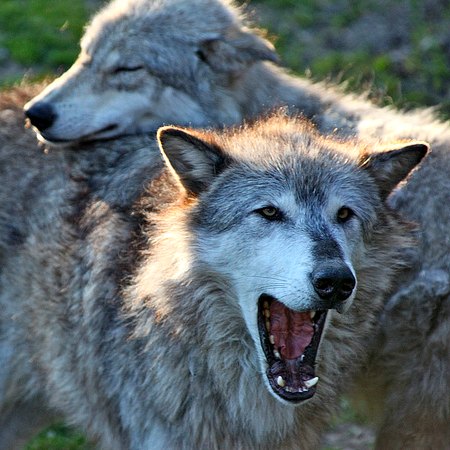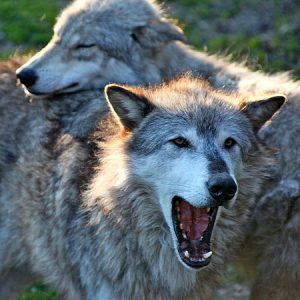
Interns on the issues: Does Alaska view wolves as vermin or vital species?
Our summer interns, Kat, Catherine and Hannah, have already jumped into legal research and writing—and into Alaska’s wilderness. This summer, they will write blog posts to share their adventures, and tell us what they’re doing, seeing and learning. Here’s part 3 of their introductory blog about what they’re doing at Trustees. This one talks about predator regulations in terms of thinking about wolves as vital species rather than vermin. Read part 1 about co-existing with migratory birds, and part 3 on protecting Bristol Bay fisheries from a huge industrial mine.
Catherine on predator regulations: Does Alaska view wolves as vermin or vital species?
When I started studying environmental law, I was amazed at how often it intersected with other fields of study. Cases always seem to cross over into other areas of law, but they also often carry a heavy dose of science, history, and public policy. For me, the appeal of practicing environmental law centers on its unrivaled opportunity to solve problems, learn diverse subjects, and defend our iconic natural treasures.
Here at Trustees, I’m gaining incredible experiences as I look at the big picture perspective and gain an understanding of how vital Alaska’s resources are to the state and the nation. My assignments include a diverse range of research and drafting assignments for the attorneys, and each one teaches me about a new area of the law and Alaska itself.
Because I’m interested in wildlife law, I’ve been especially interested in learning about Alaska’s history of predator management and how it parallels issues in the lower 48. In fact, many states still struggle with predator management over sea lions, wolves, and many other species.
Ecosystems need wolves as vital species
Predator management, especially over wolves, is an issue states have grappled with since the early colonists arrived in the Americas. In 1630, for example, the Massachusetts Bay Company implemented a bounty program and paid a penny for every wolf killed.* Yet history and science have shown us the benefits predators bring to local ecosystems.
Down in Yellowstone National Park, reintroducing wolf packs brought back beavers and lush vegetation. Once the wolves kept the elk population in check, willows recovered, birds flourished, beavers returned, water storage areas recharged, and fish increased. In short, wolves restored thriving, healthy ecosystems throughout the park.
Alaska now faces an age-old question: are wolves vermin, quarry, or vital species in our public lands?
The environment is complex and intricate; its management – as well as the laws protecting it – require big picture perspectives and the understanding that one species can have monumental impacts in diverse ways, including affecting us. At Trustees, I’m learning essential skills to see that big picture and defend our natural resources, including Alaska’s wildlife.
* June C. Edvenson, Predator Control and Regulated Killing: A Biodiversity Analysis, 13 UCLA J. Envtl. L. & Pol’y 31, 37 (1994/1995).




